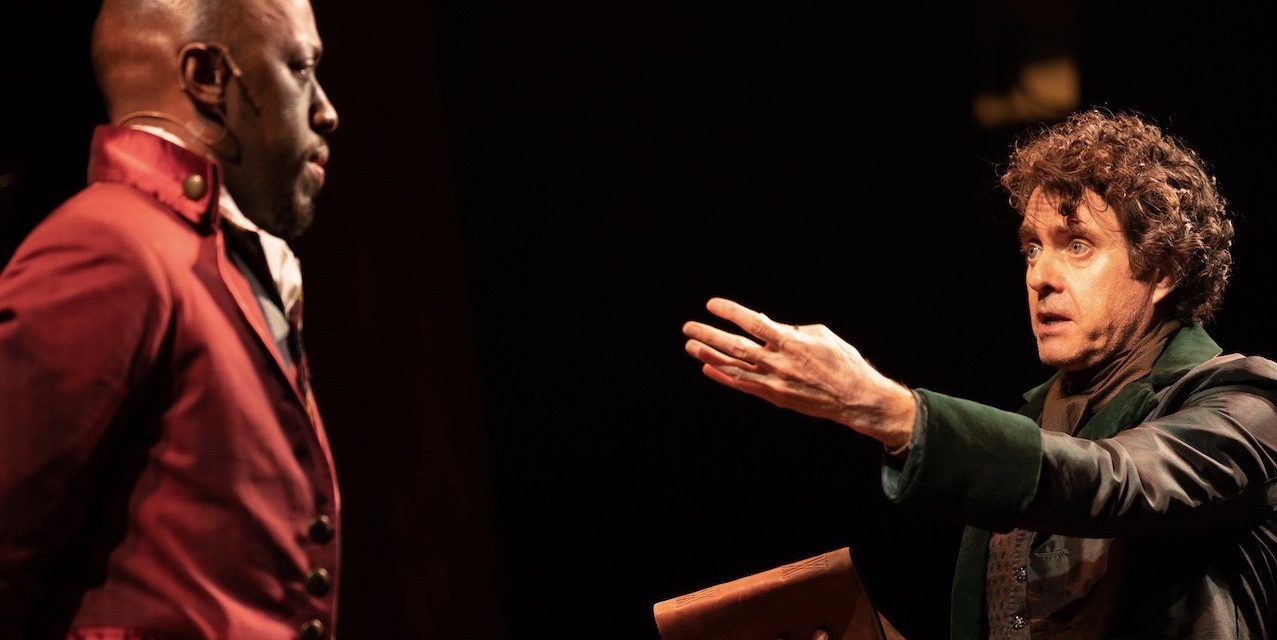
The philosopher John Stuart Mill writing of the navy’s attempts to interdict the African slave trade said, ’The British, for the last half century have spent annual sums equal to the revenue of a small kingdom in blockading the Africa coast, for a cause in which we not only had had no interest, but which was contrary to our pecuniary interest’. So the question is, how did a nation which was the leading trader in Atlantic misery arrive at such a place a mere half century or so after the abolition of that trade? The moral indignation of the nation is part of the answer, but another important part is the witness of those who took part in the trade or were its victims.
Giles Terera’s passionate polemic thrusts onto the stage a part of the remarkable story of Olaudah Equiano, an African, who through his own efforts was able to purchase his freedom. The play concerns his successful attempt, together with abolitionist campaigner, Granville Sharp (Paul Higgins) to bring to the British public’s attention the shameful events surrounding the wilful and callous drowning of 133, ‘pieces of cargo’, aboard the slave ship Zong, using first-hand testimony in a court of law where the insurers of the ship were contesting a claim for loss.
Mr Terera’s Equiano is a force that brooks no denial; owning the stage with the presence of conviction he gives a consummate performance. His writing, within the constraints of narrative history, is articulate and lyrical, notably in the drowning of Ama (Kiera Lester) where we also detect the hand of co-director, Tom Morris.

Mr Morris successfully breaks up what could have been a linear – this happened then that happened – with skilful use of the story of three of the women on the Zong for whom Mr Terera has provided a voice. The humanising of these ‘articles of merchandise’, together with the colourful costumes of Jean Chan and the traditional music of Sidiki Dembele, leaves no question (if ever there were) as to the enormity of the events on the Zong.
Jean Chan’s cleverly adaptable set which allowed a cathedral to change into a slave ship (A sly nod, I wondered, to Edward Colston’s use of timbers from one of his slave ships in the chapel of his alms house) gave Mr Morris all the flexibility he needed to weave the various parts of the story into a satisfying whole.
If Mr Terera’s aim was to give emotional form to the importance of agency and testimony (and current events in Ukraine bear this out) The Meaning of Zong must be counted a resounding success.
★★★★☆ Graham Wyles 8th April
Photo credit: @curtisrichardphotography


